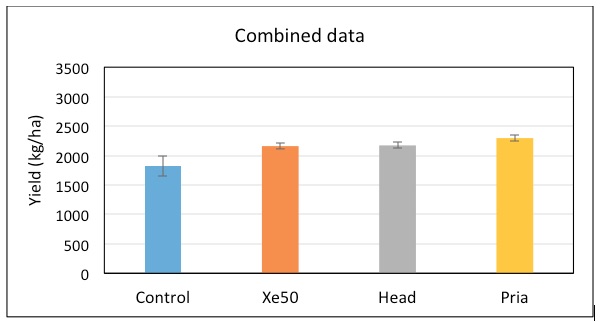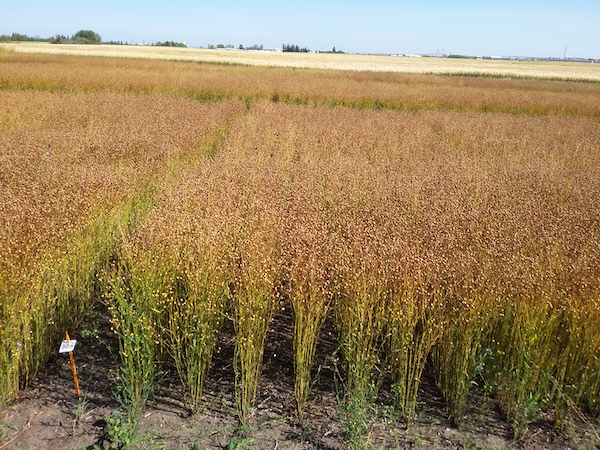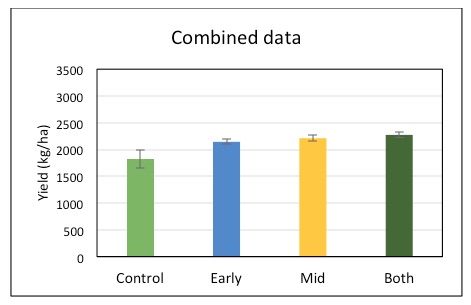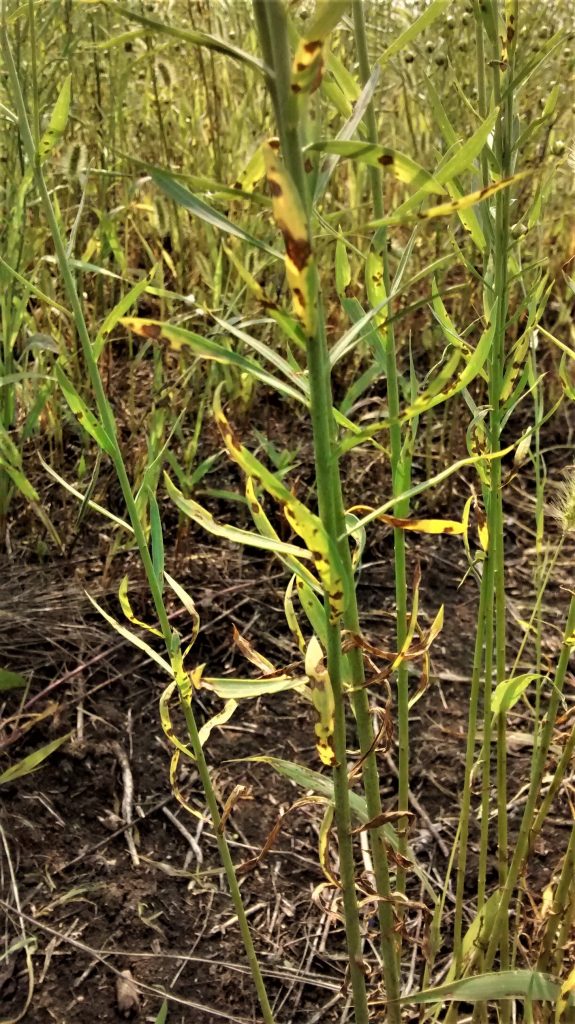
Features
Fungicides
Seed & Chemical
WEB EXCLUSIVE: Best fungicides and application timings for pasmo control in flax
Building off several research studies over the last decade, research scientist Cecil Vera at Agriculture and Agri-Food Canada (AAFC) in Melfort, Sask., wanted to narrow down the fungicide application window for control of pasmo disease in flax and investigate the effectiveness of fungicides in reducing the impacts of the disease. Graduate student Tonima (Trisha) Islam summarized the results of the three-year study that ran from 2014 through 2016 under the supervision of Randy Kutcher, an associate professor in the department of plant sciences at the University of Saskatchewan.
“Not much research has been done on the effect of fungicides on the pasmo disease in Saskatchewan and Alberta,” Islam says. “I think these new findings will help flax growers understand how to control the disease.”
The research compared three fungicides and three application timings to measure the effect of pasmo disease severity, crop maturity, seed yield, thousand seed weight and test weight of CDC Bethune flax. Trial locations were at Vegreville, Alta., Melfort and Saskatoon, Sask., and Brandon, Man. The fungicides Headline EC (pyraclostrobin), Priaxor (pyraclostrobin + fluxapyroxad) and Xemium (fluxapyroxad) were applied; currently only Headline and Priaxor are registered on flax for control of pasmo.
Fungicide application timing was at early flower (BBCH 61) and mid-flower (BBCH 65), and a dual application was made at both early and mid-flower. Applications were compared to a control without fungicide application.
Islam found all fungicides reduced disease severity, but Xemium was the least effective. With respect to timing, fungicide application at the early stage was the least effective. There was no difference in disease severity between the mid-flower application stage and the dual fungicide application.
Priaxor had significantly higher yield compared to the control and other fungicides. Priaxor increased seed yield approximately 25 per cent (2,295 kilograms per hectare, or kg/ha) compared to the control (1,822 kg/ha), followed by Headline at 19 per cent (2,172 kg/ha) and Xemium at 18 per cent (2,159 kg/ha). No significant difference was observed between Headline and Xemium.
Effect of the Xemium (fluxapyroxad), Headline (pyraclostrobin) and Priaxor (pyraclostrobin + fluxapyroxad) on seed yield of flax at Brandon, Melfort, Saskatoon and Vegreville in 2014, 2015 and 2016 Source: Islam et al., University of Saskatchewan.
Source: Islam et al., University of Saskatchewan.
However, the Priaxor treatment delayed maturity by five days, which could present a risk to seed quality in some years. The dual fungicide application also delayed maturity by five days. This delay in maturity may be a result of the effectiveness of the fungicide treatment – pasmo often results in premature ripening and earlier harvests. Earlier seeding may help to offset the delayed maturity. Priaxor increased seed yield approximately 25 per cent compare to the control.
Priaxor increased seed yield approximately 25 per cent compare to the control.
Timing of application and the impact on seed yield was also significant compared to the control. Applying fungicide at both the early and mid-flower stages increased seed yield approximately 25 per cent (2,273 kg/ha) compared to the control (1,822 kg/ha), followed by mid-flower timing at 21 per cent (2,210 kg/ha) and early flower timing at 17 per cent (2,143 kg/ha). Yield at the mid-flower application timing was not significantly different from either the dual application or the early flower application, but there was a significant difference between early and dual timings.
Effects of fungicide application timings (early, mid and both stages) on seed yield of flax at Brandon, Melfort, Saskatoon and Vegreville in 2014, 2015 and 2016 Source: Islam et al., University of Saskatchewan.
Source: Islam et al., University of Saskatchewan.
In terms of thousand seed weight and test weight – proxies for seed quality – the mid-flower and dual treatment increased TKW and test weight.
Even though the dual application provided the highest yield, economically, the net return on a second application may not make sense. “With the yield increases we have seen in Trisha’s trial and my previous experience in Melfort in the 2000s, I think two applications would rarely, if ever, be economically beneficial, based on current yields and prices for the fungicide and flax,” Kutcher says.
Making the application decision
Basing a fungicide application on the presence of the disease is difficult. Vera says that while there are cases in which pasmo may appear early in the season, in most instances the evidence of pasmo symptoms appear later in the season, and by then, it would be too late to spray.
“Usually, conditions for pasmo infection differ from year to year and from location to location, which was quite evident in this study. I think the best strategy would be to protect the crop with the best and most economical recommendations and hope for good results,” Vera says.
This means a farmer should base their decision to spray a fungicide on environmental conditions coupled with previous experience with pasmo, flax frequency in the rotation and proximity to adjacent flax stubble.
Don't miss out on our other web exclusive content! Sign up today for our E-newsletters and get the best of research-based info on field crops delivered staight to your inbox.
August 9, 2017 By Bruce Barker
 Pasmo results in defoliation and weakening of the stems
Pasmo results in defoliation and weakening of the stems